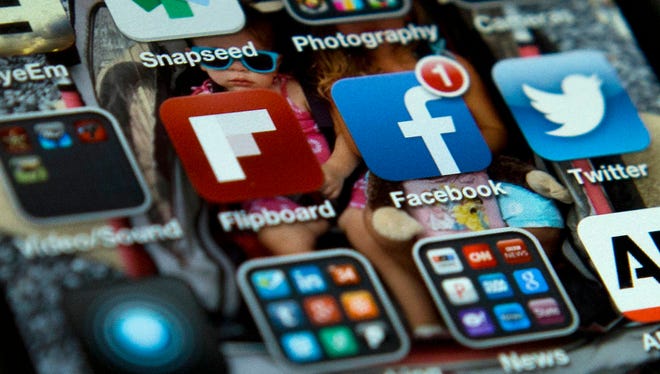How To Get An App Back On Your Home Screen

- iOS sometimes moves apps to new pages or folders
- Android comes with an %22app drawer%22
- Samsung Galaxy comes with option for contact info in lock screen
Question: Somehow I managed to delete the e-mail icon on my iPhone 4S. I still see the account in the Settings app, but where did the app go?
Answer: There are a few different ways for apps to move on their own or even appear to disappear on an iOS device, and a friend discovered one of them. You could, too.
The most likely scenario starts when you tap and hold an app's icon for about a second — easy enough to do by mistake. That switches iOS into app-management mode: That icon and every other will wiggle, and any app you installed yourself will also display an x on its top left corner.
Tap that x to uninstall the app; otherwise, you can move any app to another home screen or to the fixed dock at the bottom of the display by dragging it there. To exit this app-management mode, press the home button.
This is what seems to have happened with my friend — the Mail app had somehow gotten tossed into a new, blank home screen. (I'm not ruling out a child having a hand in this.)
But you can also send an app one level deep by mistake. If you or somebody else drags it onto another app, iOS will create a folder and toss both apps into it; if a folder already exists and you drag an app over it, down it goes.
The system tries to name folders after their contents — when I created one for the Jawbone and Withings activity-tracking apps, iOS christened it "Health"— but until you open a folder, you can only identify its constituent apps by looking at thumbnail images of their icons, one-ninth normal size.
That's how it took me months to realize I hadn't uninstalled The Daily, News Corp.'s unsuccessful try at a tablet publication: It was ensconced in Apple's Newsstand application, which looks and behaves much like a folder with fake wood trim.
Finally, deleting an app will also cause iOS to tidy up the home screen it formerly occupied — but not any others. So you can wind up with multiple home screens that have only one or two orphaned apps left on them; it's up to you to pack them back together.
(The upcoming iOS 7 doesn't alter these mechanics much.)
Apple's decision to lend this app-management interface to OS X means Mac users can face a similar level of confusion. The Launchpad you summon with a click of a Dock icon or the right touchpad gesture also doesn't automatically condense itself, leading to a lot of unnecessary horizontal scrolling.
Google's Android brings its own app aggravations. Here, you can easily browse every installed application in an "app drawer," but you may find yourself scrolling through it horizontally or vertically, depending on which company made your phone. Some models step up the confusion by listing apps you've installed after those preloaded by Google, the phone vendor and the wireless carrier.
Microsoft's Windows Phone gets this much right: To see all of your apps, flick left across the start screen and you get a simple alphabetical list you can scroll up or down. And vendors don't get to tinker with this; pick up a new Windows Phone model, and the interface is the same as it ever was.
Tip: Low-tech ways to help people return a lost device
If you lose your phone and somebody finds it, will they know how to contact you when they pick up your locked device? That's nowhere near assured.
There's no way in iOS' settings to add your contact info to the lock screen; Windows Phone can't do that either. In Android your ability to do so depends on whether you're using a stock version of Google's software (open Settings and select Security) or a third-party flavor (for instance, on the Samsung Galaxy S 4, open Settings, tap "My Device" and then "Lock screen").
What you can do, however, is add a lock-screen background image that includes your contact info. You could whip up something in a graphic-design app — or you could just write your "if lost, please contact..." message on a piece of paper, then take a photo of that with the device's camera and set it as your lock-screen wallpaper.
—
Rob Pegoraro is a tech writer based out of Washington, D.C. To submit a tech question, e-mail Rob at rob@robpegoraro.com. Follow him on Twitter at twitter.com/robpegoraro.
How To Get An App Back On Your Home Screen
Source: https://www.usatoday.com/story/tech/columnist/2013/08/11/ios-apps-home-screen-apple-iphone/2632707/
Posted by: vargasanich1974.blogspot.com

0 Response to "How To Get An App Back On Your Home Screen"
Post a Comment